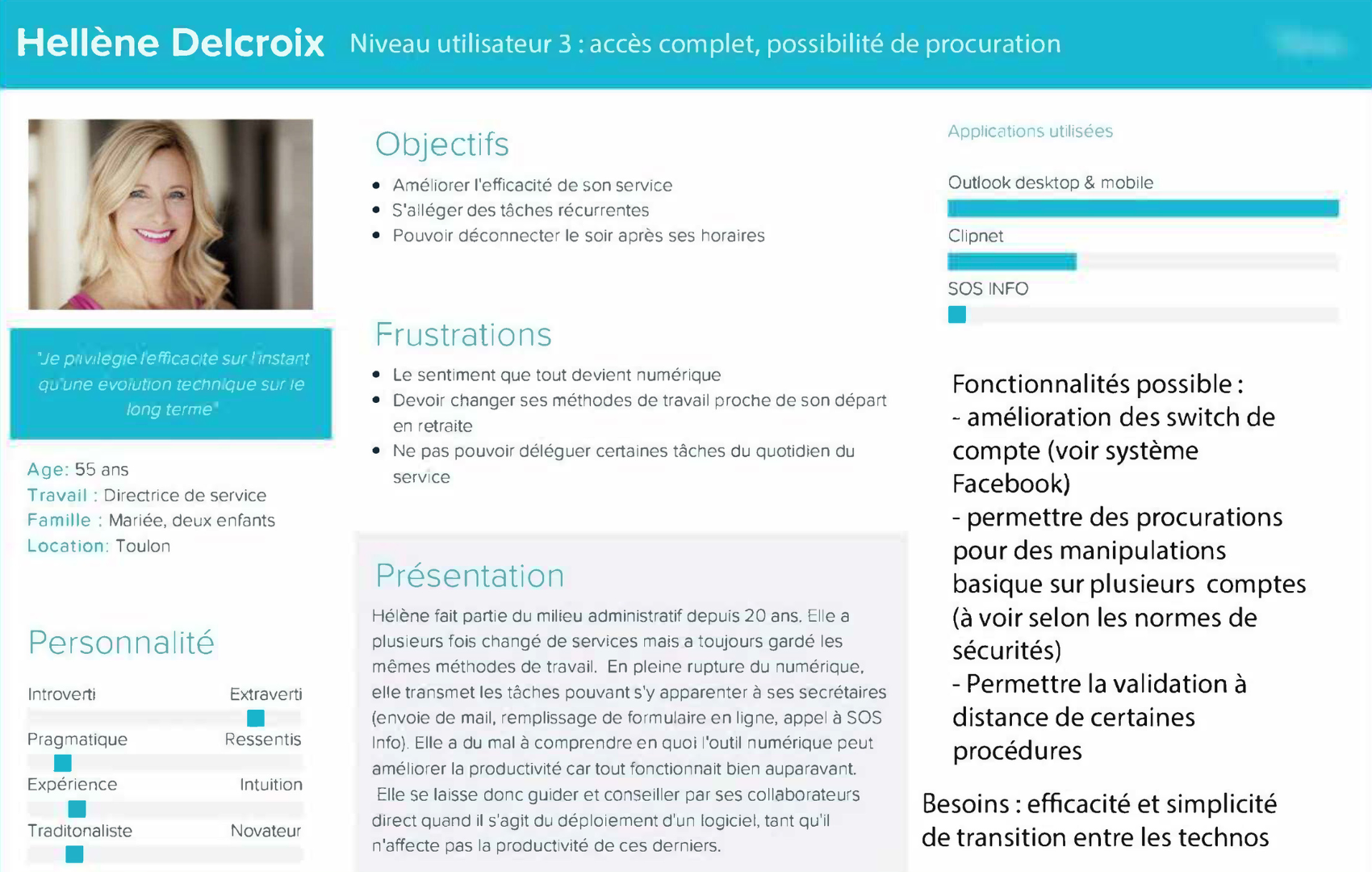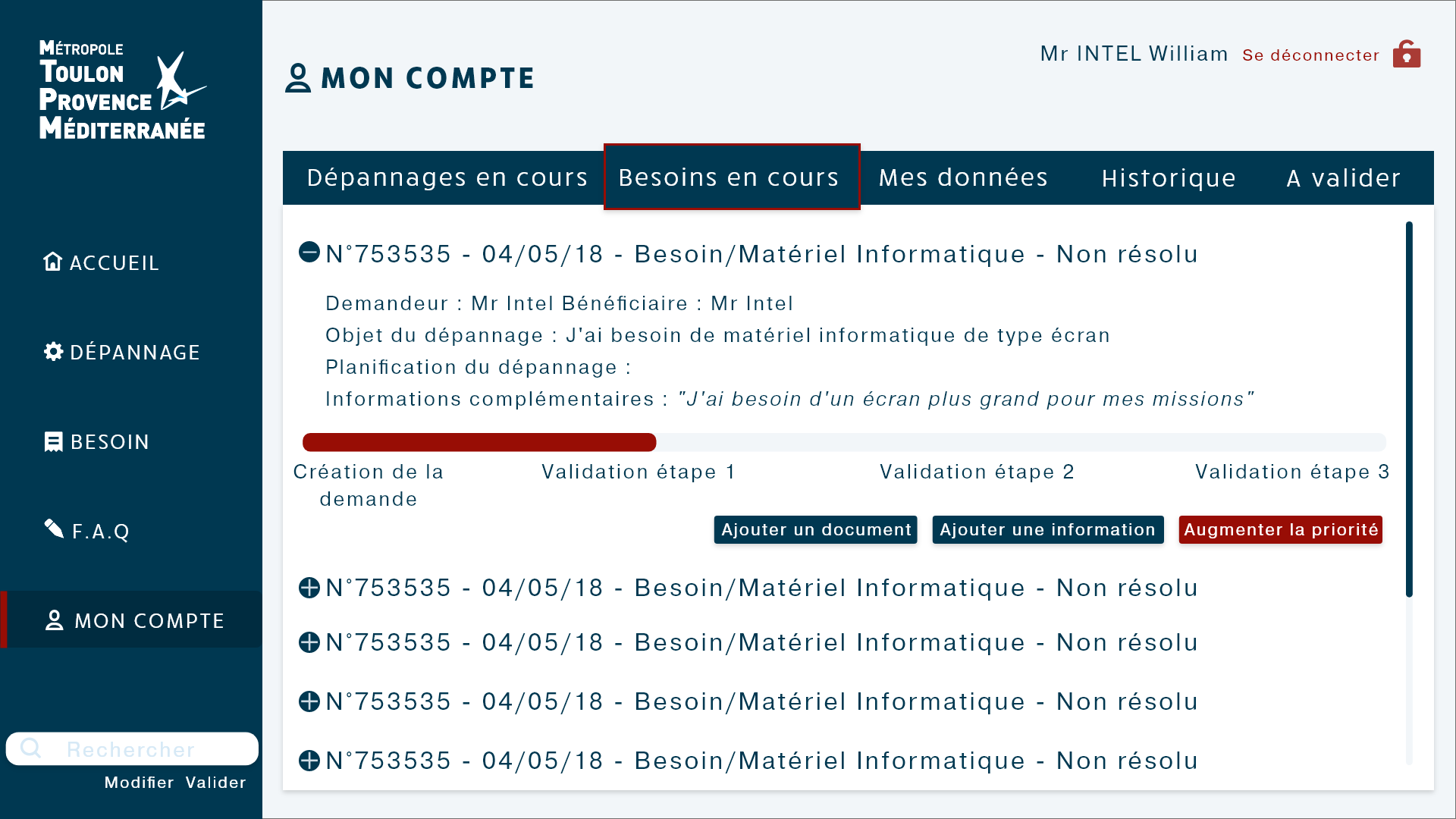1. GLOBAL MISSION & CONTEXT
The TPM Metropolis brings together 12 municipalities, 437,460 inhabitants (42% of the population of the Var). TPM today has around 2,400 agents and 81 metropolitan elected officials. Two projects conducted in AGILE methodology over a period of six months with a cross-functional team of 15 peoples. We had to rework DCSI (Direction of Information Systems) services ticketing software.
• Organization and participation in operational steering committees
• Creation of personas after field survey
• Writing user stories
• Rewriting of the DCSI user relations service workflows
• Realization of low fidelity models to test the wording of interfaces and user behavior
• A/B testing of models in low fidelity to quantify the added value provided to users
• Realization of a project graphic charter in connection with the communication and project teams
• Creation of graphic elements
• Consolidation of graphic elements and creation of mock-ups in high fidelity
• Finalization and transmission of specifications to service providers
• Creation of personas after field survey
• Writing user stories
• Rewriting of the DCSI user relations service workflows
• Realization of low fidelity models to test the wording of interfaces and user behavior
• A/B testing of models in low fidelity to quantify the added value provided to users
• Realization of a project graphic charter in connection with the communication and project teams
• Creation of graphic elements
• Consolidation of graphic elements and creation of mock-ups in high fidelity
• Finalization and transmission of specifications to service providers
2. PROBLEMATIC AND PERSONAS
The main issue of this project was to reduce friction between users and the DCSI agent regarding generated tickets. With a high rate of misclassified tickets, DCSI agents were no longer in control of the deadlines and quality of issue resolution encountered by other agents of the Metropole. This was further accentuated with the change of status from Agglomeration to Metropole carried out by TPM in 2018.
To identify the challenges of this ticketing system redesign project, I conducted a study with a panel of 20 users representing different typologies of agents in order to create personas. Three types of agents emerged from this study and were filtered based on their level of computer literacy, responsibility, predominant work environment (in the office, outdoors), and accessibility to certain types of equipment.

Level 1 user : No responsibilities, mostly field agent without access to a personal computer.

Level 2 user : Agents with limited responsibilities (managing interns, a small team), mostly working in offices with access to a computer fleet.

Level 3 user : Department director and budget manager. Final decision maker for all purchasing matters and process validation regarding the department. Administrative details of this position are typically handled by secretaries.
3. WIREFRAME, MID-FIDELTY PROTOTYPE AND USER TESTING
Once the personas were created, we moved on to the wireframing and initial prototyping phase using Adobe XD. The first low-fidelity wireframes were created on paper in conjunction with developers to test initial user experience ideas. These initial prototypes were based on competitor software, an assessment of the previous software in place, and the customer service operations of different companies.
A significant amount of work was done on literacy to convert DCSI processes into a language that end-users could understand, regardless of their computer knowledge. To accomplish this, end-users were mobilized, and A/B testing and design thinking sessions were organized to review the naming of different titles and produce a correspondence table between internal titles and end-user names. These tests were conducted with a panel of 20 users representing the mentioned personas and in a volume representative of the distribution of the agents
Between the current version of the software and the new version of the user journey created through these tests, we went from 55% of tickets being correctly classified to 85%.
First mid-fidelity prototype made for user testing on Adobe XD.
4. HIGH-FIDELTY INTERFACE AND CONCLUSION
Once the user path were established, I contacted the Communications department of the Metropole to establish a graphic charter for the final interfaces. This was partially decided by their department. I standardized all interfaces, finalized the last user behaviors to be transmitted as a priority for the start of development. Some of the interfaces/functionality (History, Ticket Tracking, and FAQ) were not included in the public version 1 of the software but will be integrated later. Following my collaboration with the Metropole, I conducted a feedback request at +6 months. The result was a reduction in parasitic calls to the DCSI services, tickets better distributed to the correct services thanks to more precise qualification, and an overall higher satisfaction rate among agents regarding the DCSI service.

1.0 Home page with an alert on

2.0 "Needs" page

2.1 "Needs" page with a short description of the category

3.0 Form exemple with pre qualified tickets thanks to a list of different identified needs

4.4 My account - Historic

4.2 My account - "Needs in process"
5. SKILLS AND SOFTWARE
Key skills : Information architecture, Prototyping, User research, User testing, AGILE management, Decision mapping, Collaboration, Empathy.
Software : Adobe XD, Illustrator, Microsoft Office, Trello, Slack.